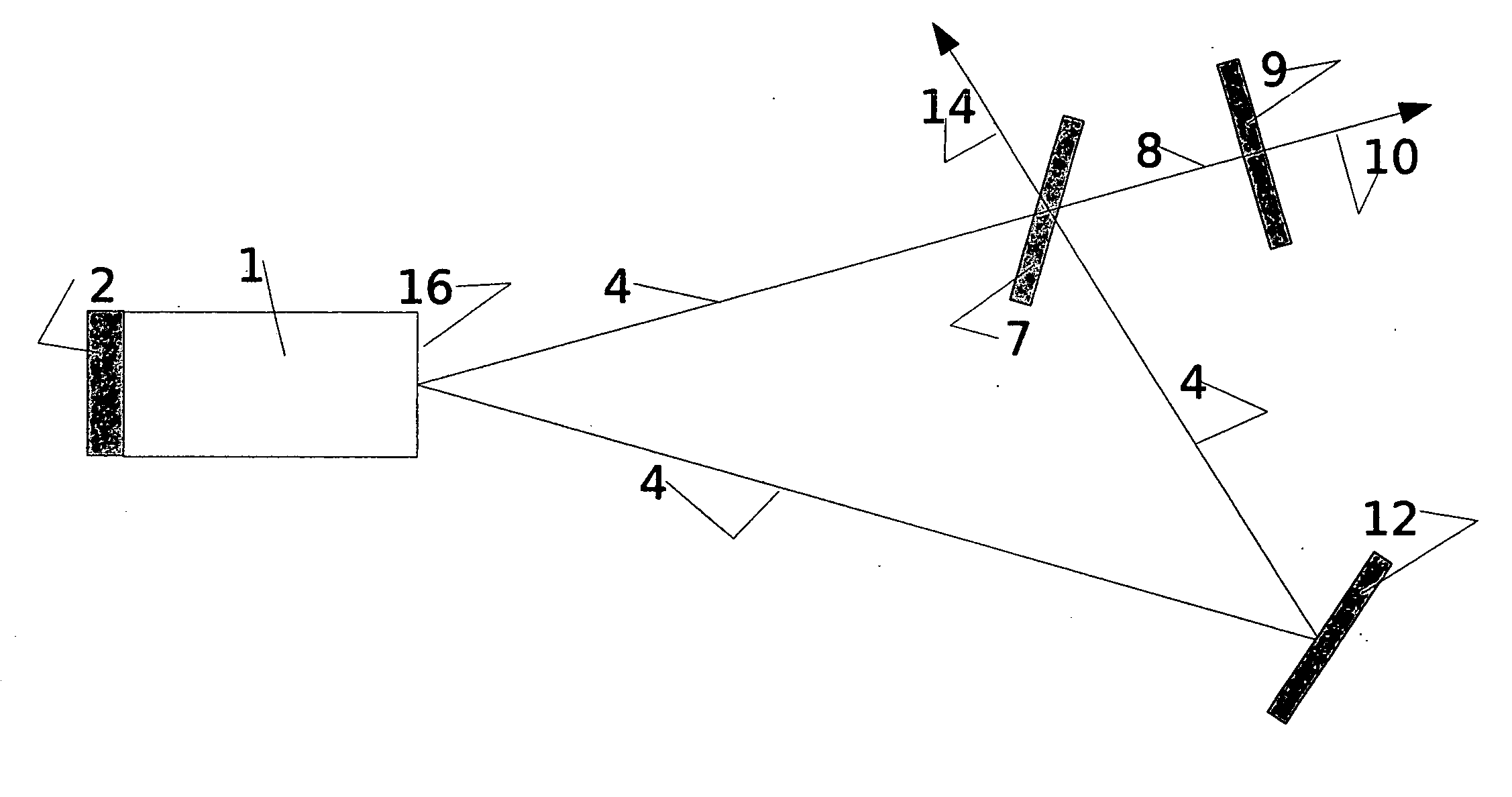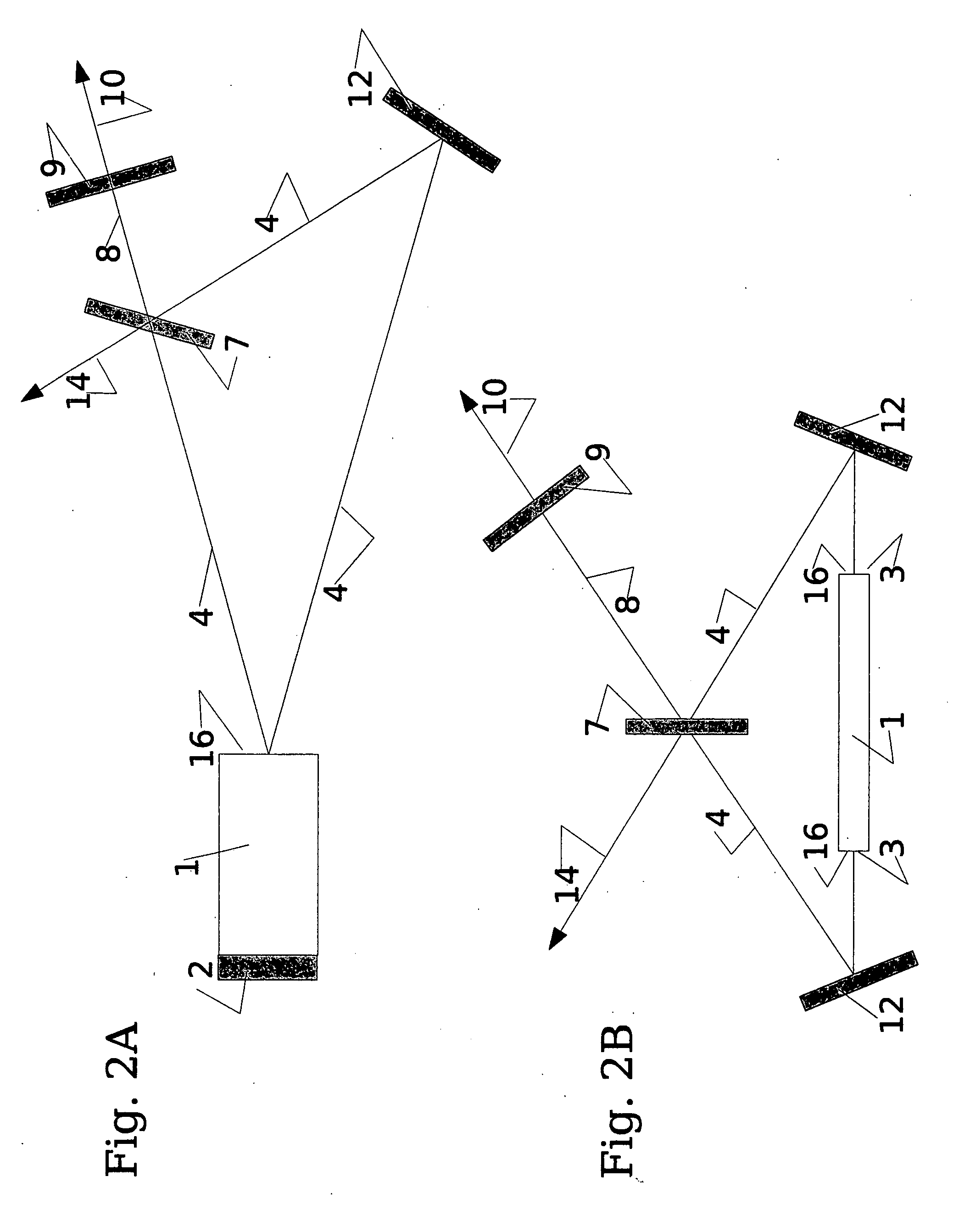Laser resonator comprising an internal beam splitter
a laser resonator and beam splitter technology, which is applied in the direction of laser details, optical resonator shape and construction, electrical apparatus, etc., can solve the problems of affecting the overall performance of the laser resonator, all losses and non-usable light emission are harmful to the overall performance, and the maximum achievable output power or power density, respectively, is way too low for numerous applications, and achieves better beam quality and spectral characteristics. , the effect of improving the output power
- Summary
- Abstract
- Description
- Claims
- Application Information
AI Technical Summary
Benefits of technology
Problems solved by technology
Method used
Image
Examples
Embodiment Construction
[0031]A principal depiction of the concept of the laser resonator of the present invention is given in FIG. 1A which shows the light path from the gain 1 to the feedback element 9. FIG. 1B indicates the reverse. The gain 1 material is characterized by its ability to react with stimulated emission to feedback. It may be a setup or arrangement with or without its own resonator. That means that in the following paragraphs generally no distinction is made between setups that are externally forced to resonate at a given laser emission, usually called “seeding” or regenerative amplifier, and setups in which the resonators are completed only by the external feedback. If a distinction with respect to the gain 1 is made at all, then the former will be called “laser” and the latter “semi-open laser” to emphasize the fact that the latter is missing feedback on one side. A laseractive gain 1 possesses at least one surface 16 through which at least two different beams 4 can couple in and out. Fo...
PUM
 Login to View More
Login to View More Abstract
Description
Claims
Application Information
 Login to View More
Login to View More - R&D
- Intellectual Property
- Life Sciences
- Materials
- Tech Scout
- Unparalleled Data Quality
- Higher Quality Content
- 60% Fewer Hallucinations
Browse by: Latest US Patents, China's latest patents, Technical Efficacy Thesaurus, Application Domain, Technology Topic, Popular Technical Reports.
© 2025 PatSnap. All rights reserved.Legal|Privacy policy|Modern Slavery Act Transparency Statement|Sitemap|About US| Contact US: help@patsnap.com



